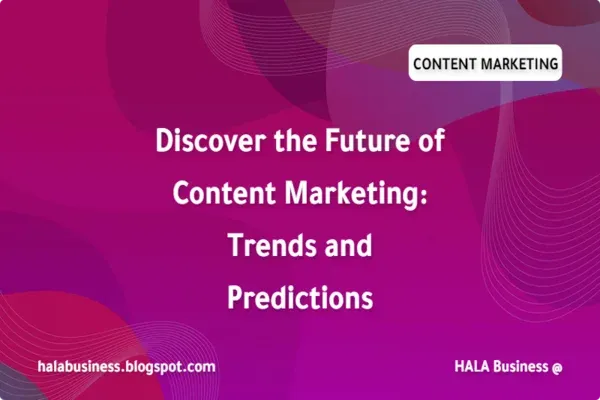Content marketing is constantly evolving, and it can be challenging to stay on top of the latest trends and predictions.
As a digital marketer, I'm here to share some insights on the future of content marketing and what businesses should look out for in the coming years.
From AI-generated content to interactive storytelling, these are the trends that are shaping the future of content marketing and how to best leverage them for your business.
AI-generated Content
AI-generated content is the use of artificial intelligence to automatically produce written or spoken content.
With the advancements in natural language processing (NLP) and machine learning, AI-generated content is becoming more sophisticated and is increasingly being used in content marketing.
This technology can assist in creating personalized, high-quality and consistent content faster and at a lower cost.
Businesses can use AI-generated content to create personalized marketing campaigns, to generate leads, and to create automated content for social media, email marketing campaigns, and chatbots.
However, it is important to remember that the ultimate goal is still to provide value to the customer, which can be done by a human touch.
Interactive Storytelling
Interactive storytelling is a way to engage your audience and make them part of the story. This type of content can take many forms such as polls, quizzes, and interactive videos, and allows the audience to actively participate in the narrative.
This type of content not only increases engagement, but also provides valuable insights into the preferences and interests of your audience.
Businesses can use interactive storytelling to create brand loyalty, increase brand awareness and generate leads by creating interactive content such as quizzes, polls and interactive videos.
Personalization
Personalization is the process of customizing content, messages and experiences to meet the individual needs of your target audience.
Personalized content can be used to increase engagement, improve customer satisfaction, and ultimately drive more conversions.
Personalization can be achieved through a variety of techniques such as using customer data, behavior, and demographics to create personalized content, or using AI-generated content to create personalized messages and experiences.
Personalized content not only improves customer satisfaction, but also helps to increase customer loyalty.
Micro-moments
Micro-moments are the fleeting instances where people reflexively turn to their device to act on a desire to learn something, do something, discover something, watch something, or buy something.
The consumer behavior in these micro-moments is where marketers will need to focus on, as it's becoming increasingly important for businesses to be present and reach out to consumers at the right time with the right message.
To leverage micro-moments, businesses need to identify the triggers and behaviors of consumers, and create content that is easily discoverable and easily consumable in those moments.
By providing useful and relevant information at the right time, businesses can increase brand awareness, drive conversions and improve customer loyalty.
Influencer Marketing
Influencer marketing is the process of working with social media influencers to promote your brand, products or services. Influencer marketing is becoming increasingly popular as a way for businesses to reach new audiences and build trust with their target market.
Influencer marketing can be an effective way to promote products or services in a way that feels authentic, and to tap into a built-in audience.
However, it's important for businesses to be selective about the influencers they work with, and to ensure that their values and message align with those of the brand.
Virtual and Augmented Reality
Virtual and augmented reality are becoming increasingly popular and accessible, and they are being used in a variety of ways in content marketing.
Virtual reality can be used to create immersive experiences, while augmented reality can be used to enhance real-world experiences.
Businesses can use virtual and augmented reality to create engaging and memorable content, to build brand awareness and to drive conversions. It can be used to create virtual tours of products, immersive brand experiences, and interactive training and educational content.
Conclusion:
The future of content marketing is constantly evolving, and businesses need to be aware of the latest trends and predictions in order to stay competitive.
From AI-generated content to interactive storytelling, personalization, micro-moments, influencer marketing and virtual and augmented reality, these trends are shaping the future of content marketing and provide businesses with new opportunities to connect with their audience and drive results.
By staying on top of these trends and being open to new ideas, businesses can leverage these techniques to create effective and engaging content that will ultimately drive conversions and growth.



0 Comments